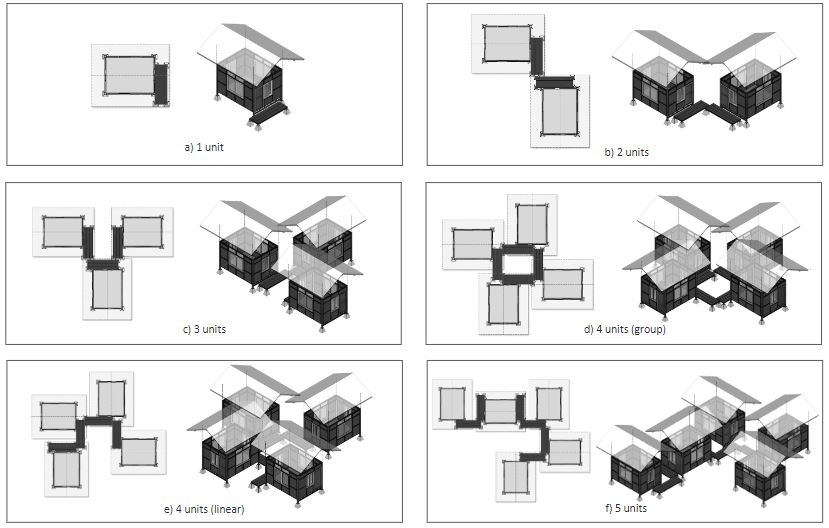Development and Production of Artificial Log Composite for Prefabricated Modular Home
DOI:
https://doi.org/10.56261/built.v11.167863Keywords:
Fiber cement material, Log, Wall panel, Log home, Prefabricated homeAbstract
e purpose of this study is to develop artificial log composites with light-weight and low thermal conductivity properties, and to demonstrate the production of prefabricated modular home. The artificial log composites were designed and produced with five different types of pipe including: polyvinyl chloride pipe (PVC Pipe), PVC pipe reinforced with recycled paper pulp cement core, recycled paper pulp cement reinforced with water plastic bottle core, recycled paper pulp cement reinforced with PVC pipe core, and recycled paper pulp cement reinforced with round bar steel. The physical, mechanical, and thermal conductivity properties of the artificial log composites were investigated and compared to common building materials in the market. Then the proper artificial log composites were selected to produce the prefabricated wall panels for demonstrating the production of prefabricated modular home. From the results, it found that the artificial log composites from recycled paper pulp cement reinforced with PVC pipe core was the proper composite material which possessed good properties and low cost. It was produced and installed on prefabricated modular homes easily and rapidly and could follow the expected work plans. The total cost of the prefabricated modular home was 11,415 Baht/square meter. Finally, this artificial log composite is a new alternative material for producing modular homes in the commercial business.
Downloads
References
Folorunso, O. P., & Anyata, B. U. (2007). Potential uses of waste paper/sludge as a ceiling material. Research Journal of Applied Sciences, 2(5), 584-586.
Khedari, J., Suttisonk, B., Pratinthong, N., & Hirunlabh, J. (2001). New lightweight composite construction materials with low thermal conductivity. Cement & Concrete Composites, 23, 65-70.
Khedari, J., Charoenvai, S., & Hirunlabh, J. (2003). New insulating particleboards from durian peel and coconut coir. Building and Environment, 38, 435-441.
Khedari, J., Watsanasathaporn, P., & Hirunlabh, J. (2005). Development of fiber-based soil cement block with low thermal conductivity. Cement and Concrete Composite, 27(1), 111-116.
Lertsutthiwong, P., Khunthon, S., Siralertmukul, K., Noomun, K., & Chandrkrachang, S. (2008). New insulating particleboards prepared from mixture of solid wastes from tissue paper manufacturing and corn peel. Bioresource Technology, 99, 4841-4845.Sangrutsamee, V. (2012a). Decorative products and furniture from newly developed paper pulp. Journal of Architectural/Planning Research and Studies (JARS), 9(2), 95-104.Sangrutsamee, V. (2012b). Development of lightweight interlocking blocks. Proceedings of Built Environment Research Associated Conference (BERACE III), (pp. 12-20). Pathumthani, Thailand: GBP.
Souza, M. R. D. (2000). Utilization of wastepaper to manufacture low density boards. Bioresource Technology, 72, 77-79.

Downloads
Published
How to Cite
Issue
Section
License

This work is licensed under a Creative Commons Attribution-NonCommercial-NoDerivatives 4.0 International License.











